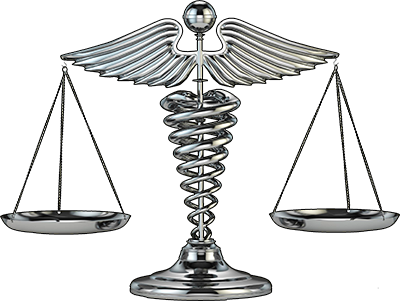MEDICAL DEVICE LIABILITY
Tens of millions of Americans have medical devices implanted in their bodies. Some common examples are hip and knee implants, heart pacemakers and defibrillators, vascular stents and filters, surgical mesh and IUDs.
Deaths and serious complications can be associated with simple devices as well as complex ones. I learned that in litigation I undertook on behalf of healthcare workers against the manufacturers of powdered latex gloves. The FDA classified those gloves as medical devices.
In the 1980’s and 1990’s, powdered latex gloves caused thousands of doctors, nurses and other healthcare workers to develop respiratory problems ranging from asthma to fatal or near-fatal anaphylactic reactions.
Those problems were caused by breathing air contaminated with glove powder. The glove powder became airborne when powdered gloves were donned or removed. The powder was dangerous because it was saturated with latex protein allergens.
I came to know many affected healthcare workers in the 2000’s when I brought suits on their behalf in many different states. Those cases were settled on a confidential basis (as required by the defendants).
Medical devices constitute a $350 billion industry. In the last 10 years, it has spent over $150 million on lobbying to accelerate devices’ path to the market, often by weakening measures intended to ensure patient safety.
You might assume that the FDA requires all medical devices to be tested on human beings in clinical trials before they can be sold. But that isn’t true for more than 90% of medical devices.
For most implants and other devices, “manufacturers do nothing more than file some paperwork and pay the Food and Drug Administration a user fee of roughly $4,000 to start selling a product that can rack up many millions of dollars in revenue. Often, the only safety “testing” that occurs is in the bodies of unsuspecting patients.” (1)
Americans are dying and undergoing additional surgeries and hospitalizations because the FDA’s process for approving a medical device lacks three crucial safeguards:
1. Clinical trials are not required prior to allowing the device to be sold.
2. Pre-market inspections are not required to make sure the device is made correctly, appropriately sterilized, and so on.
3. Post-market clinical trials or epidemiological studies are not required as a condition of approval. So, in other words, the devices are not studied in clinical trials before they can be sold, and the FDA doesn’t require scientific post-market studies as a condition of approval. (2)
“Dangers posed by unsafe devices are magnified by the FDA’s poor record of responding to problems after they emerge. The FDA has repeatedly acted too slowly and too timidly in response to clear evidence of dangers posed by devices on the market."
“Even when dangers compel a company to issue a recall, current law often allows manufacturers to satisfy the terms of the ‘recall’ merely by sending out warning notices that their devices have shown a tendency to fail.” (3)
We don’t know how many people die every year from unsafe medical devices. Experts agree that adverse reaction reports sent to the FDA represent only a fraction of the actual harm.
In 2006, the FDA reported 116,086 device-related injuries and 2,830 deaths. In 2009, there were 4,556 reported deaths.
These deaths and the hundreds of thousands of serious complications reported to the FDA every year are just the tip of the iceberg, because most deaths and adverse reactions are never reported. (2)
References
1. Consumer Reports Dangerous medical implants and devices—Most medical implants have never been tested for safety. Consumer Reports, May 2012. http://www.consumerreports.org/cro/magazine/2012/04/cr-investigates-dangerous-medical-devices/index.htm#.
2. Statement of Diana Zuckerman, PhD, President of the National Research Center for Women & Families at a House of Representatives Briefing on Medical Devices, May 17, 2011.
http://center4research.org/public-policy/testimony-briefings-statements/statement-of-diana-zuckerman-phd-president-of-the-national-research-center-for-women-families-at-a-house-of-representatives-briefing-on-medical-devices/.
3. Public Citizen. Substantially Unsafe—Medical Devices Pose Great Threat toPatients; Safeguards Must be Strengthened, Not Weakened. February 2012. https://www.citizen.org/documents/substantially-unsafe-medical-device-report.pdf


